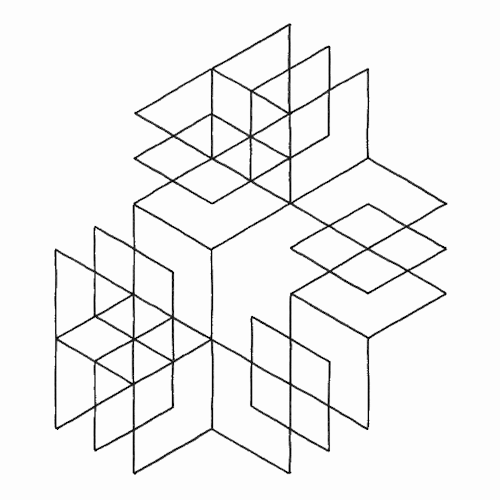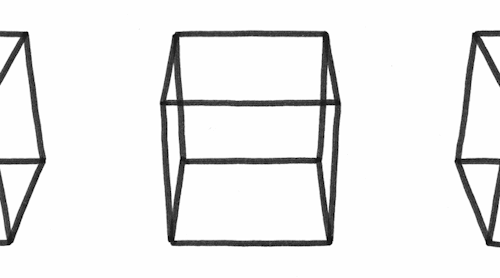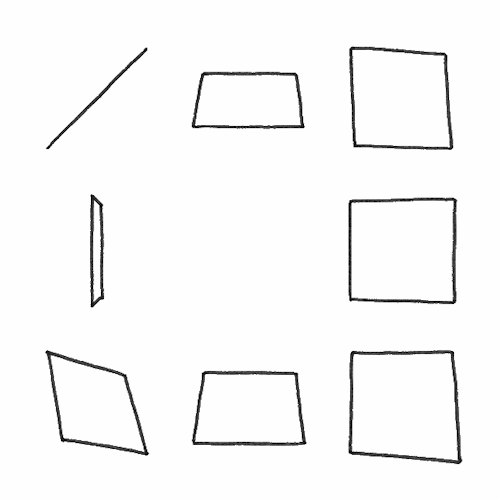Reasoning about facts and possibilities
Adapted from Khemlani, Byrne, and Johnson-Laird (2018).
Mental models were first proposed as a basis for deductive reasoning over forty years ago. Since then the model theory has expanded to cover most areas of reasoning including induction and abduction. A recent advance in the theory shows how the theory handles reasoning about facts and possibilities.
Possibilities — not necessities, not truth values, and not probabilities — underlie the model theory. For instance, to understand an assertion such as, “The fault is in the software or in the connection, or both”, the model theory argues that reasoners represent the scenario as a conjunctive set of possibilities, akin to:
possible(software)
& possible(connection)
& possible(software & connection)
An abbreviated diagram of the representation is:
software
connection
software connection
where each line represents a distinct possibility. While three possibilities are listed above, reasoners can distinguish between facts and possibilities: a “fact” is a situation that yields a set of models containing exactly one model.
A primary prediction of the model theory is that when inferences require reasoners to consider multiple distinct possibilities, those inferences call for multiple distinct models — and they’re difficult. Reasoners take longer to make those inferences and they’re more prone to error. They can fall prey to systematic reasoning illusions. Many studies have corroborated these predictions, and a new set of computational models simulates how people reason with alternative possibilities.
Collaborators
Pierre Barrouillet, Ruth Byrne, Geoff Goodwin, Phil Johnson-Laird, Sangeet Khemlani, Isabel Orenes, Cristina Quelhas, Marco Ragni, Célia Rasga, Carlos Santamaria
Recent papers
- Barrouillet, P., Gauffroy, C., & Lecas, J. F. (2008). Mental models and the suppositional account of conditionals. Psychological Review, 115, 760-772.
- Byrne, R. M. J., Johnson-Laird, P. N. (2009). “If” and the problems of conditional reasoning. Trends in Cognitive Science, 13, 282-287.
- Goodwin, G.P. (2014). Is the basic conditional probabilistic? Journal of Experimental Psychology: General, 143, 1214-1241.
- Goodwin, G.P., & Johnson-Laird, P.N. (2018). The truth of conditional assertions. Cognitive Science, manuscript in press.
- Hinterecker, T., Knauff, M., & Johnson-Laird, P.N. (2016). Modality, probability, and mental models. Journal of Experimental Psychology: Learning, Memory, and Cognition, 42, 1606-1620.
- Hinterecker, T., Knauff, M., & Johnson-Laird, P.N. (2018). How to infer possibilities: A reply to Oaksford et al. (2018). Journal of Experimental Psychology: Learning, Memory, and Cognition, commentary in press.
- Johnson-Laird, P. N., Khemlani, S., & Goodwin, G.P. (2015). Logic, probability, and human reasoning. Trends in Cognitive Sciences, 19, 201-214.
- Khemlani, S., Byrne, R.M.J., & Johnson-Laird, P.N. (2018). Facts and possibilities: A model-based theory of sentential reasoning. Cognitive Science, 42, 1887–1924.
- Khemlani, S., Hinterecker, T., & Johnson-Laird, P.N. (2017). The provenance of modal inference. In G. Gunzelmann, A. Howes, T. Tenbrink, & E. Davelaar (Eds.), Proceedings of the 39th Annual Conference of the Cognitive Science Society. Austin, TX: Cognitive Science Society.
- Khemlani, S.S., Orenes, I., & Johnson-Laird, P.N. (2012). Negation: A theory of its meaning, representation, and use. Journal of Cognitive Psychology, 24, 541-559.
- Khemlani, S.S., Orenes, I., & Johnson-Laird, P.N. (2014). The negations of conjunctions, conditionals, and disjunctions. Acta Psychologica, 151, 1-7.
- Quelhas, A. C., & Johnson-Laird, P. N. (2017). The modulation of disjunctive assertions. Quarterly Journal of Experimental Psychology, 70, 703–715.
- Quelhas, A.C., Rasga, C., & Johnson-Laird, P.N. (2017). A priori true and false conditionals. Cognitive Science, 41, 1003-1030.
Ragni, M., Kola, I., & Johnson-Laird, P.N. (2018). On selecting evidence to test hypotheses. Psychological Bulletin, 144, 779-796.


